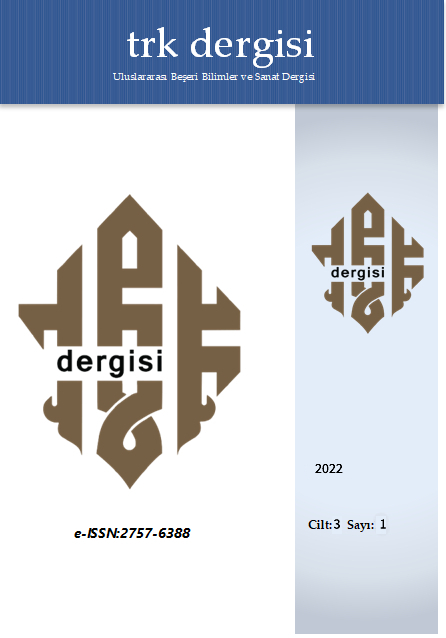Fire in Leylȃ And Seref Gazelles
DOI:
https://doi.org/10.5281/zenodo.7492691Keywords:
Leylâ Hanım, Seref Hanım, Classical Turkish Literature, Divan, Fire.Abstract
Literature reflects the way society lives. Our poets and writers who allow us to look at this way of living from a new perspective try to open new horizons in the minds of the reader with using and reshaping social and cultural elements that they have incorporated from the society in their own self. Indeed, they are not interested in the tip of the iceberg but in the unrevealed part of it. Because trying to find a meaning is because humankind has trying to reconcile the purpose of their own existence. Literature which is affected by this expressionism is in a way a translator of the poets who express their own feelings and ideas. According to this explanation, the element of fire, which has gained an important place among social elements and has the focal point of human life throughout history, draws attention with its features such as: a source of heat and light, communication tool, protection from evil eye and “anâsır-ı erbaa”. From time to time, fire is glorified, and it has become a cult and sometimes it is seen as the essence of the universe. Our classical Turkish literature writers present the element of fire with deep meanings in their literary works through blending what they experience in their social life and poetics. Through this study, Leylâ and Seref Hanım, whose names were mentioned a lot in the 19. century, after briefly including their lives and understandings of art. When it comes to the methods of this study, collected poems of both poets are meticulously screened. After the process of screening of couplets about the element of fire, two main headlines are created: “Lover” “his state of love” and “Lover” “Her state of love”. Then, detailed explanation about the theme of Fire has been given in these couplets.
Downloads
Published
How to Cite
Issue
Section
License
Copyright (c) 2022 trk dergisi

This work is licensed under a Creative Commons Attribution 4.0 International License.





